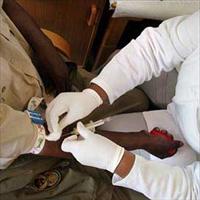SUDAN: HIV rate is mostly guesswork

No sign advertises the availability of voluntary HIV counselling and testing (VCT) at the Family Planning Centre in Port Sudan, a busy transportation hub in Sudan's Red Sea State. It is one of only three sites in town offering these services, but the waiting room is deserted.
VCT only became available in Port Sudan in 2006 and, according to Ahmed Musa, local coordinator of the Sudanese National AIDS Control Programme (SNAP), it has been slow to catch on. Of the 181 people who were tested here in 2007, only 18 walked through the door on their own initiative; the rest were HIV "suspects" referred by their doctors, and more than half had positive test results.
With voluntary testing still at such low levels and the last national HIV prevalence survey conducted over five years ago, experts can only speculate about the extent to which HIV has taken hold in Africa's largest country.
The 2002 survey indicated a national infection rate of about 1.6 percent, but was not broken down by state. A new HIV prevalence and behaviour change survey to be conducted later this year in both north and south Sudan, will provide state-by-state data, but the results are unlikely to be available before 2009. "It's a huge undertaking," said Severine Leonardi, HIV/AIDS manager at UNICEF, one of several donors supporting the SNAP survey.
Experts agree that many factors allowing the rapid spread of HIV are present in eastern Sudan, which includes Red Sea State, as well as Kassala and Gedaref states to the south. In the meantime, figures from VCT clinics are among the few indicators available.
At the main VCT clinic in Kassala, which has been promoted more widely than those in Port Sudan, nearly half the 411 people who were tested in 2007 came voluntarily, a significant increase from previous years. Yet Ishraga Eleman, SNAP coordinator for Kassala State, cautioned that of the 129 who had positive tests, many were referrals and therefore did not represent the general population. HIV prevalence, she said, was still "all just guessing".
Eastern Sudan vulnerable
Among the factors that make eastern Sudan vulnerable to HIV, Eleman cites the region's open borders with Ethiopia and Eritrea, where the HIV infection rate is thought be about twice that of Sudan, as well as the influx of refugees and people fleeing conflict in southern and western Sudan who have settled in the region.
Kassala and Port Sudan are also way stations on the busy route between the Red Sea coast and Khartoum. Long-distance truck drivers, many of whom frequent sex workers, mingle with the local populations.
Levels of awareness about HIV are also low, said Dr Mohammed Soghaier, a World Health Organisation representative based in Port Sudan. In rural areas especially, a conservative mindset and low literacy rates have challenged efforts to educate people about protecting themselves against the virus.
Only about 50 percent of children attend primary school in Kassala, while 17 percent make it to secondary schools. "We need to increase the level of education and deal with the literacy problem before we can deal with health issues like TB, malnutrition and HIV," Soghaier told IRIN/PlusNews.
A 2006 national household health survey conducted jointly by the governments of north and south Sudan, with technical support from several UN agencies, found that although about 70 percent of adult Sudanese women had heard of HIV, only about 4 percent knew how to prevent it. In Red Sea and Gedaref states the figure was only 2.6 percent.
Intisar Mohammed, a programme officer for the Sudan National Committee on Traditional Practices, a non-governmental organisation working with SNAP to provide HIV education in rural areas, believes the use of unsterilised instruments to carry out tribal scarring, tattooing and the circumcision of young girls could also be contributing to HIV infections.
Although government policy officially discourages female genital mutilation (FGM), the practice is still carried out on about 70 percent of Sudanese women, according to the household health survey. In the north the percentage is far higher.
Traditional midwives or older female relatives with very little training usually perform the procedure. "They do several girls at the same time, using the same instrument," Mohammed said. "I've seen many cases of serious infections."
See Also
- UGANDA: HIV/AIDS triggers rise in TB infections
- NIGERIA: College slammed for HIV testing
- Linda Mbiko: "Johannesburg is a place of gold, but it's not easy to get that gold, even if you dig"
- LIBERIA: New programme to prevent mother-to-child transmission gains momentum
- LIBERIA: HIV rates lower than feared
 Back and Next - Back and Next
Back and Next - Back and Next See Also - See Also
See Also - See Also